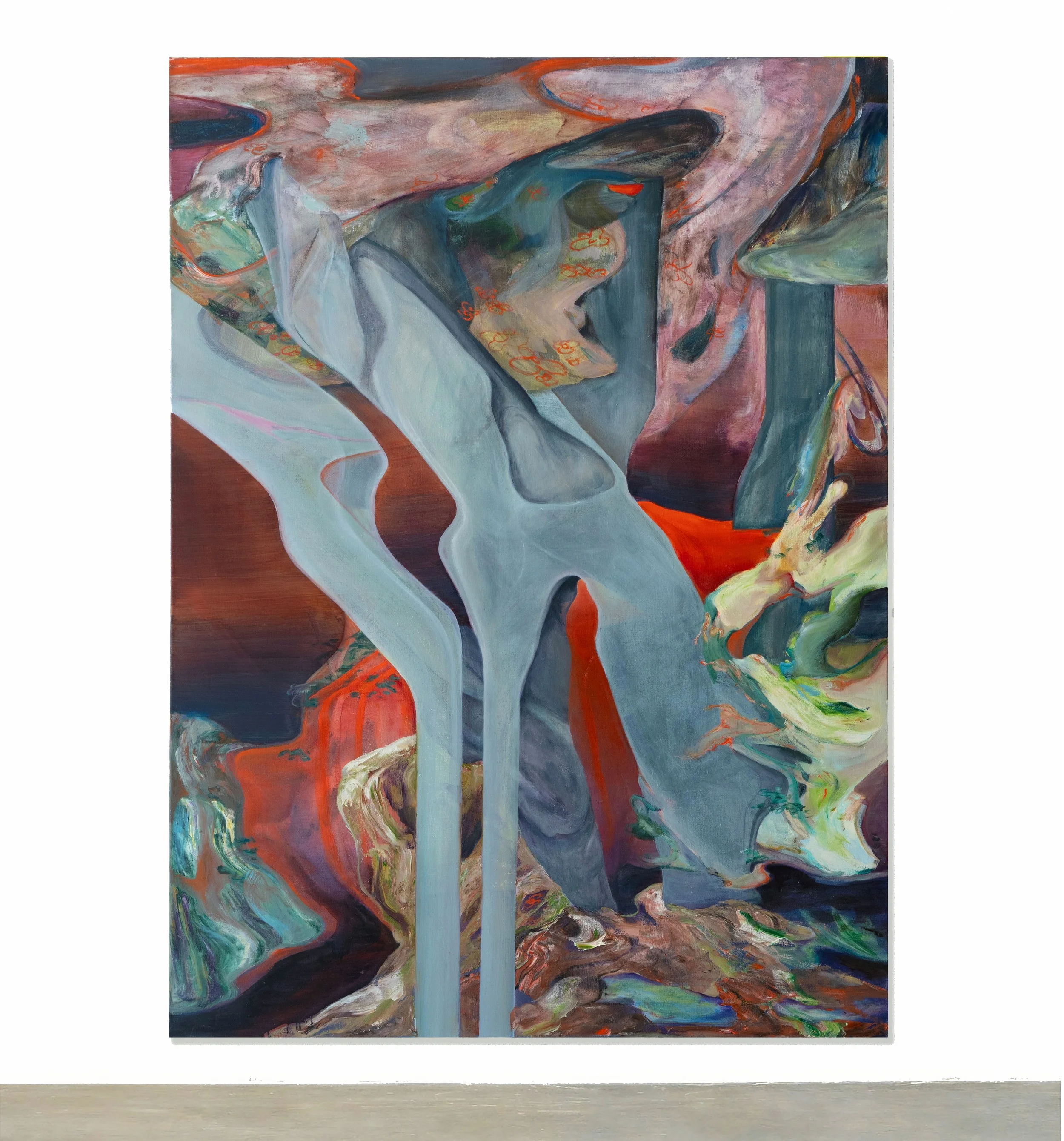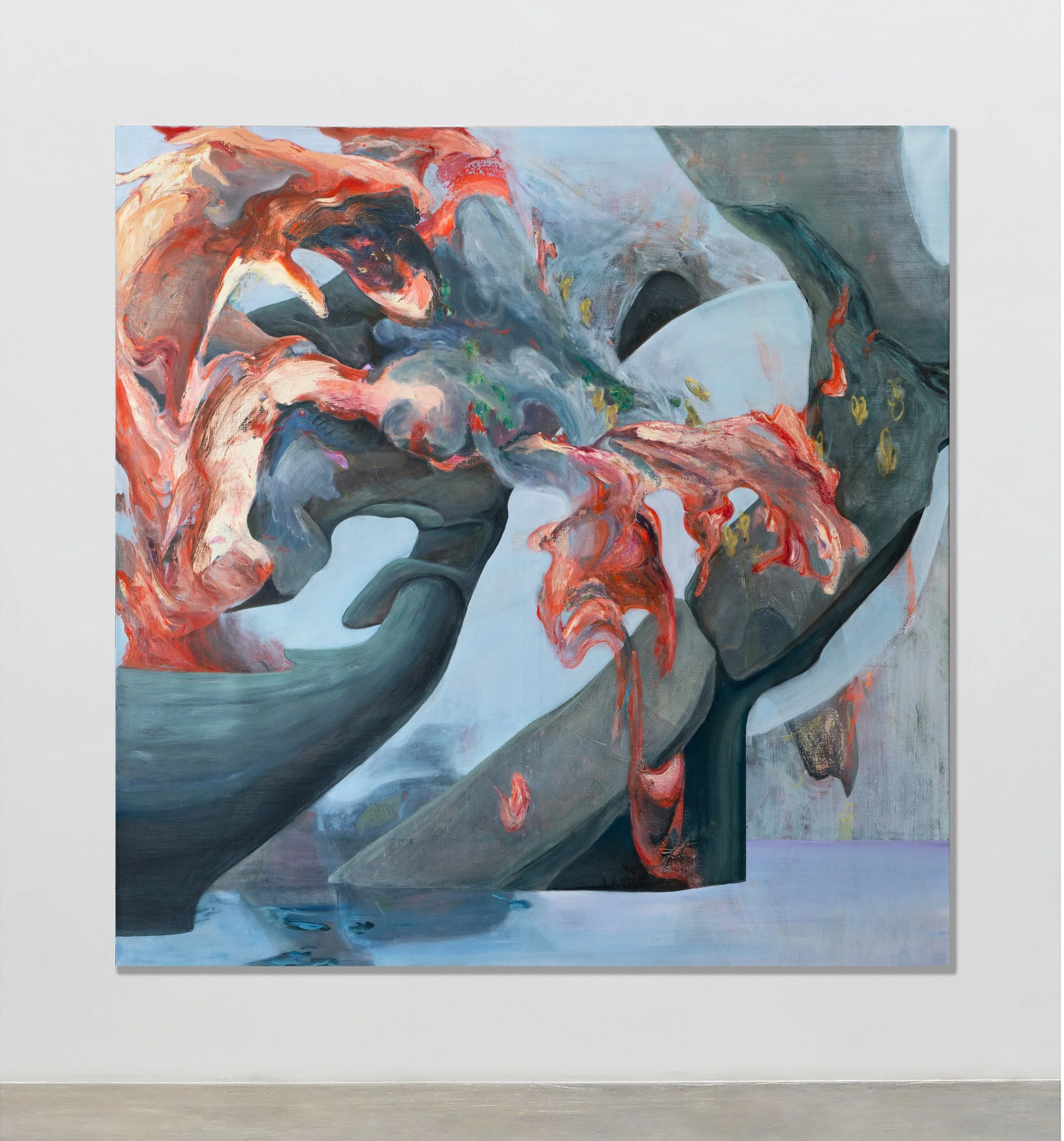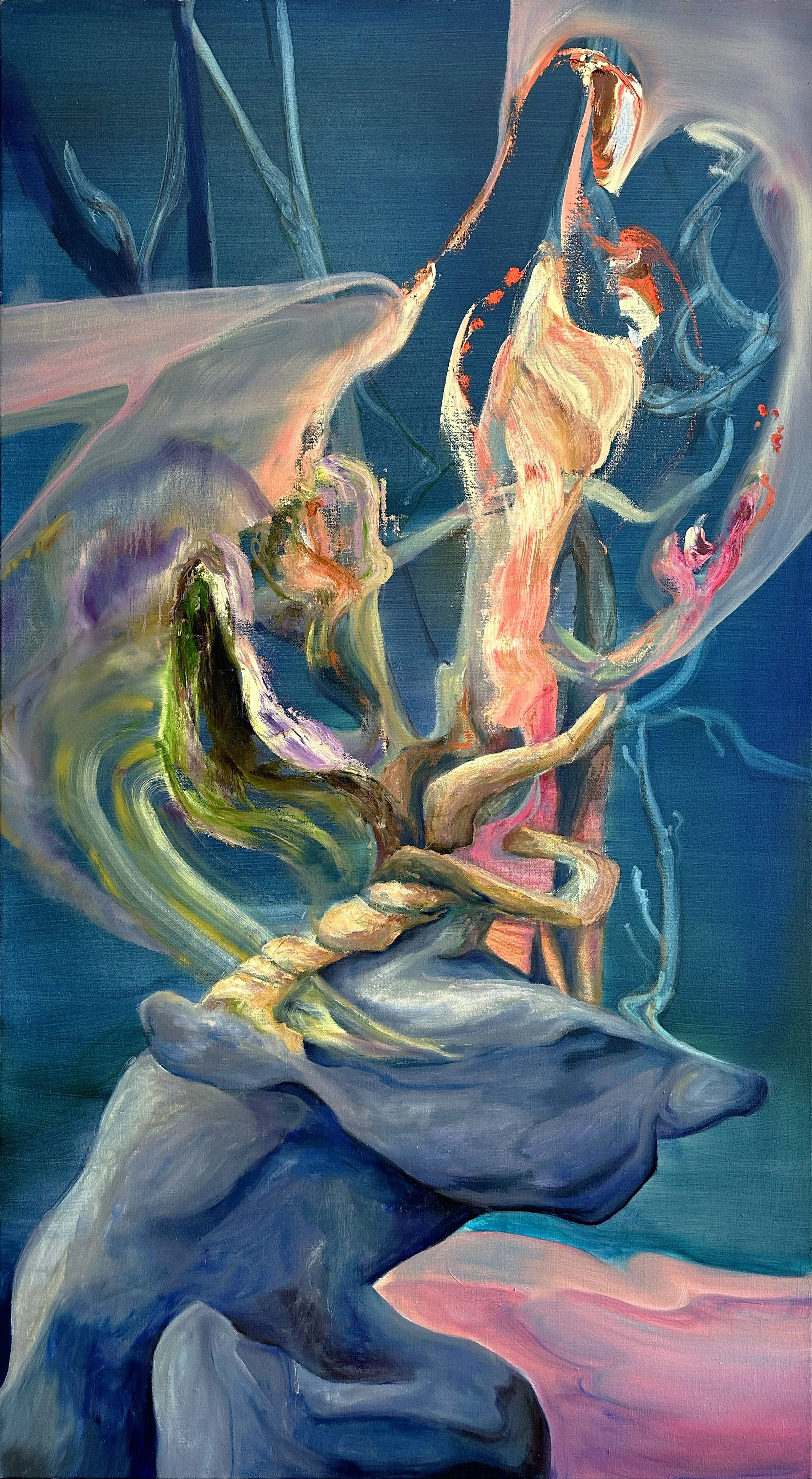Vanishing Future
2024-2025
” My being – my decay” … Such wrote a young Austrian painter at the beginning of the 20th century, a certain Egon Schiele, a painter who perhaps better than any other of his generation knew how to give form to certain aspects of the human condition, the metamorphosis of Being, and the existential fragmentations that comes from knowing that individual human life is finite.
Today, a bit more than hundred years later, a new set of painters including Clément Bedel is also dealing with the human condition, the metamorphosis of being, and indeed, with a human that is standing face to face with its own decaying. An existence, that is undergoing a violent existential metamorphosis, and who is facing its conditions and coordinates vanishing at the same pace as the habitability of the planet that it belongs to.
Let’s take a step back. The world has transformed into a different place. The Earth we thought was stable has turned out unstable; we are living on an ecologically damaged planet; the reasons are human-caused; and with open eyes, we are drifting towards a planet uninhabitable for our own and several other life forms. Yet, Earth is not the only thing that looks different today, because by being the very cause of this mutation the very human condition has also changed. Indeed, today the human being has simply transformed into another kind of existence – one that is every day is destroying its own earthly conditions of existence.
Now, what are the affects, the experiences, and the moral, ethical, existential coordinates of this new human being? What does it mean to face yourself as an existence, that day by day is destroying your own species-being’s collective conditions of subsistence – or who is making your own being decay, albeit in a completely different way?
I am not an art critic, but it strikes me that this is what is at stake in Bedel’s paintings, and what I myself under the term ‘new existentialism’ have elsewhere suggested that philosophy puts all its stakes into investigating: How the human moral-existential landscapes today appear fragmented, ripped to pieces by its own being’s ecological weight. Yet, as always, the power of theory to investigate, mirror, transform, and perhaps even sooth novel existential contours and affects is of course nothing compared to that of art. Paintings, especially, have always been absolutely essential in exploring the human condition, and in making us sensitive to certain silhouettes and transformations of it – no matter how frightening it is to look it in the eyes.
And hence the importance of a novel generation of painters like Clement Bedel, and a set of paintings like these, that are grappling with how the individual and collective human condition today, in a time of global climate change, appear transformed, fractured and recomposed. If we merge the themes of two paintings from this series, for instance, then what does it mean to take on The Departure into Vanished Futures? Not a bad question, at a time where no collective future is certain at all. Or: What does it mean to face Concrete Ghosts? Not a bad question either, when the concrete, destructive ecological traces of the old generations who decided to ignore all scientific alarm bells are haunting us every day.
These are just a few examples, but to again turn back to where we started out, then what they both concern is another way of posing the question “My being, my decay”, one related to the metamorphosed human condition of the Anthropocene. An issue and a topic that appear to me as being as of absolutely crucial importance in philosophy as for the arts to explore – an importance that will only intensify, I am afraid, in the decades to come.
Nikolaj Schultz - May 2025
Overflow, oil on canvas, 220x160 cm, 2025
Echoes of Impermanence, WUK Projectraum, Vienna, December 2024
The history of painting is, in many ways, a history of currents—of tides that flow beneath and above the visible register. These are the submerged and the surfacing movements, the minor undercurrents and the dominant overflows, whose interplay forms a layered cartography of image and gesture. In Echoes of Impermanence, Clément Bedel invites us into a terrain where painting becomes less a window than a wave, and where vision is less an act of seeing than of surfing.
To surf a painting is to let go of the linear. It is to enter a mode of embodied perception where movement precedes meaning, where the surface is not a skin but a sequence—a field of echoes, sediments, ruptures, and returns. Bedel’s new works do not present themselves as static objects but as temporal experiences. They unfold as if already in motion, already in decay, already remembering what has been overlaid, scraped, or forgotten.
The surfboard in this analogy is not just a vehicle but a method—a cognitive and perceptual apparatus that glides along a field of accumulated gestures. Here, the canvas operates as a Doppler surface, a resonance chamber where meaning is always slightly delayed, always refracted, doubled, or spilt. The distinction between the overcoat and the undercurrent collapses into a recursive play of surfacing and submerging. The painting ceases to be a finished form and instead becomes a temporal event—an impermanent inscription on the edge of perception.
What is crucial here is the contradiction at the core of painting itself: its claim to permanence, and its persistent state of impermanence. In Bedel’s practice, this contradiction is not resolved but enacted. Each canvas bears witness to a history of cancellations, reworkings, obliterations, and reappearances. These are paintings that remember. The overpainted becomes the undercurrent; the buried gesture is what gives rise to the visible form. What we encounter is not merely what is shown, but what resurfaces from prior refusals—ghosted traces, spectral lines, muffled voices of past attempts.
There is a quiet violence in this process: the violence of overwriting, of layering, of re-coating the gesture. But there is also care, and a refusal to let the act of painting settle into finality. In this sense, Bedel’s practice can be understood as a form of Surfism—a poetics of impermanence that aestheticizes the moment of slippage, spillage, and unfixing. It is not an art of resolution, but of movement; not of control, but of negotiation with the medium’s historical residue.
To surf, in this context, is not to play, but to persist. Not to master the wave, but to stay with its instability. Surfing becomes a metaphor for a cognitive discipline—an act of receptivity to the in-between, the not-yet-coherent, the half- seen. Bedel’s paintings perform this discipline by never allowing the image to settle. They fracture and reconstitute themselves before the viewer, demanding not only attention but attunement. The eye becomes an instrument of tracking, of feeling through and along with the painting’s own search for its form.
Images, in this series, break—but they break like waves, not like objects. They do not shatter; they crest and disperse, returning again as foam, shimmer, or after-image. This cyclical temporality dislodges painting from the authority of fixed meaning and situates it within a continuum of appearing and disappearing. The field of vision becomes a temporal medium, and light—a traditional emblem of painting’s truth—is treated less as illumination than as wavelength, rhythm, resonance.
We are reminded that to see is already to interpret, to frame, to misrecognize. The separation between the image and the world it references is undone. Bedel’s work refuses the distance necessary for rational contemplation, and instead draws us into the immediacy of affective perception. His abstraction is not about reduction or detachment, but about sedimentation—a layering of time, emotion, and thought. This is not abstraction as negation, but as complexity.
The painter’s gesture here is both intimate and impersonal. It emerges from a bodily engagement with the medium, yet it always gestures beyond itself—toward something unspeakable, something submerged in the very act of surfacing. It is an ontology of flux, not form. A motion that carries with it the memory of past velocities, the undertow of previously submerged lines, and the overcoat of what was never fully present.
In this way, Echoes of Impermanence contributes not just to the visual history of painting but to its philosophical horizon.It repositions painting as a site of ungrounding, where perception meets time in a liquid state—where the surface is not aboundary but a passage. The “sum-space” of Bedel’s canvases is a space of simultaneity, where overcurrents andundercurrents co-exist, overlap, and entangle. And it is in this entanglement that the painting becomes not a thing to beseen, but a phenomenon to be surfed.
Darko Vukić
Concrete Ghosts, oil on canvas, 190x190cm, 2024
Growth, oil on canvas, 170x110 cm, 2024


